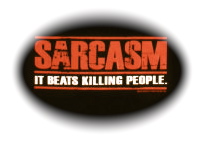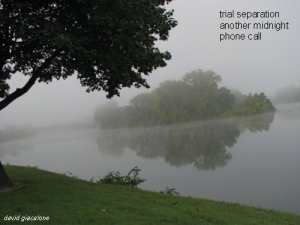 .. It’s not even close: Wendy Savage was by far the most popular subject in 2008 at our modest little weblog — attracting thousands of extra visitors a day for many weeks. See posts such as “Boston’s ‘Beautiful Lawyers Calendar’ is launched” (October 2, 2008) “Wendy Savage Wendy Savage” (Oct. 23, 2008), “lots more Wendy Savage, Esq.” (November 18, 2008). Wendy graced the f/k/a Gang with a pair of blawg Comments, a few additional photographs, and a series of personal email communications, which allowed this Editor get to know her beyond the fashion-model aura.
.. It’s not even close: Wendy Savage was by far the most popular subject in 2008 at our modest little weblog — attracting thousands of extra visitors a day for many weeks. See posts such as “Boston’s ‘Beautiful Lawyers Calendar’ is launched” (October 2, 2008) “Wendy Savage Wendy Savage” (Oct. 23, 2008), “lots more Wendy Savage, Esq.” (November 18, 2008). Wendy graced the f/k/a Gang with a pair of blawg Comments, a few additional photographs, and a series of personal email communications, which allowed this Editor get to know her beyond the fashion-model aura.
The death last week of Eartha Kitt — a woman known originally for her sexiness but respected and treasured worldwide for her talent, allure and spunk — reminded me that I wanted to come back to an issue that our coverage of Wendy raised with some of my most valued friends. One intelligent and sensitive Baby Boomer female friend chastised me, saying:
“The world does not need more posting of women with low cut dresses calling attention to themselves. Sorry, but that’s just the way I see it. We get to be human beings , too—women these days are way too sexually objectified constantly.”
 .. the calendar photo that started it all . .
.. the calendar photo that started it all . .
My reply at the time was something like: “To me, one of the glories of the human race is that we produce people who can be good, intelligent, talented human beings AND beautiful, and even sexy.”
One of the best things about our current age is that it is possible for a woman to be fully respected — among people with even average levels of EQ — as a human being, and a professional, while being beautiful and sexy. For over a quarter century, I’ve seen smart, sexy women in important positions, as bosses, managers, colleagues, and partners within the legal professsion (beginning in the late 1970’s at the Federal Trade Commission). When such a talented professional woman chooses to have a tasteful-but-sexy photo of herself used for a good cause in a fund-raising calendar, I believe it helps the cause of cross-gender appreciation — even if some juvenile males (who shall always be among us) act like jerks when viewing and discussing the photo, or some thin-skinned females choose to be offended or to act catty. [Note: On a related topic, we opined about neo-puritanism within the legal profession back in 2006, during the flap over a Jiwani ad in Massachusetts Lawyers Weekly. And see our post on the Fetman Firm Billboard.]
![]() When I raised this topic with Wendy Savage back in November, she replied: “I do think that modern, educated men are able to appreciate that a woman can be smart and beautiful, and they want both in a partner. “
When I raised this topic with Wendy Savage back in November, she replied: “I do think that modern, educated men are able to appreciate that a woman can be smart and beautiful, and they want both in a partner. “
Furthering this discussion (a little), Boston Magazine has opened its new publication year with an article that focuses on Wendy Savage, titled “Counsel Requests the Right to Appeal: Smokin’-hot lawyer Wendy Savage defends her buzzy turn as a pinup” (Boston Magazine, by Alyssa Giacobbe, January 2009). After noting that Wendy was “by far the most come-hither among the calendar’s 12 male and female models, and thus the only one who’d attract significant attention,” the BM article states:
.. Photograph at Boston Magazine by Jackson Stakeman ..  ..
..
“Since Beautiful Lawyers was released in October, Savage—2006 graduate of BU School of Law, corporate lawyer, and sometime model—has inspired both a following of oglers and a torrent of criticism on legal blogs for what some consider a risky move for any attorney aiming to be taken seriously, especially a female one. Beneath a post on Above the Law, which shows a picture of Savage in a plunging neckline and calls her “Boston’s version of Joe the Plumber,” the responses go something like this: Wendy Savage can work on my pipe anytime she wants. Or: Her? She’s not that hot. And then, a multipost, Porky’s-esque debate over whether her breasts are real. (Savage declined to comment on such speculation, calling it ‘gutless objectification.’)”
In actuality, Wendy did submit a longer written response to Boston Magazine writer Gioccobe about the authenticity speculation, but they chose not to print it. According to an email Wendy sent us this morning, she wrote:
 2) I am conflicted about responding to the gossip on the blogs. The fact that my “peers” are taking time out of their days to offer such asinine commentary (all anonymously I will note) speaks volumes about their character (or lack thereof, to put it more accurately). I have done my best to avoid those who are driven to such pathetic, gutless objectification – I don’t intend to start engaging them now.
2) I am conflicted about responding to the gossip on the blogs. The fact that my “peers” are taking time out of their days to offer such asinine commentary (all anonymously I will note) speaks volumes about their character (or lack thereof, to put it more accurately). I have done my best to avoid those who are driven to such pathetic, gutless objectification – I don’t intend to start engaging them now.
It seems to me to reflect the “dumbing down” effect of the Tucker Max culture.
I have learned firsthand what ad agencies and countless women before me have known for ages — all it takes is a little cleavage to turn some men into driveling babies.
The BM article does get a bit more substantive, stating:
“Coming off an election season that saw an intellectual woman flogged for her appearance and an attractive woman attacked for her lack of depth, Savage is acutely aware of the double standard that female professionals face—and how to maneuver around it. ‘I wouldn’t say my looks have been a big positive in my career, but people tend to underestimate you if you look a certain way,’ she says. ‘I think I’m smarter than I appear. That’s worked to my advantage’.”
![]() Wendy also told Boston Magazine: ‘When I was younger, I cared a lot about what people thought about me, people that I didn’t even know,’ she says. ‘But I’m 28 and feeling like I’m starting to grow up. Doing the calendar was my choice, and I’m proud of it.’
Wendy also told Boston Magazine: ‘When I was younger, I cared a lot about what people thought about me, people that I didn’t even know,’ she says. ‘But I’m 28 and feeling like I’m starting to grow up. Doing the calendar was my choice, and I’m proud of it.’
We clearly are not going to resolve the issue of the effects on professional and personal reputation from the publication of sexy (but not trashy nor pornographic) photographs of lawyers and other women (or men). When I’ve thought about this and similar topics over the years, I’ve tried to figure out how or why sexiness is any different from all the other attributes that we use to judge/treat/value other human beings, many of which are simply genetic accidents (e.g., intelligence, height, wealth, power, fame, charisma). I’ve also wondered how and whether to distinguish situations where the individual freely chooses to be judged by or to utilize a particular attribute. It is tricky stuff. I know that many disagree with my current sentiments, and I am open to further discussion, while hoping that dissenters or skeptics are also willing to reconsider any blanket condemnation of publishing lovely women in skimpy black dresses.
Enjoying beauty is very natural for human beings of all genders, ages and cultures. If you come here often, you know that the f/k/a Gang also appreciates and greatly enjoys beautiful scenes in nature. Here’s a (non-retouched) photo that I took from the end of my block yesterday afternoon. That’s my favorite bench in Riverside Park, and Wendy Savage is welcome to join me there any time to enhance the scene and the sublimity of the experience:
– Riverside Park, Schenectady, NY, along the Mohawk River; Dec. 29, 2008; photo by David Giacalone –
sua sponte –
madame justice
catches me staring
. . . by dagosan
Of course, we have long agreed with this sentiment by Jesse Winchester in his song “Isnt’ That So?” [YouTube video here]
Isn’t That So 
Didn’t He know what He was doin
Putting eyes into my head?
If He didn’t want me watching women
He’d a-left my eyeballs dead
©1972 Jesse Winchester – From the LP “Third Down, 110 To Go“
Now, please let us know what you think, with thoughtful and polite comments (both IQ and EQ will be graded by Prof. Yabut).

Leap Day –
an old friend
takes off her glasses
.. by Yu Chang – photo haiga orig. posted at Magnapoets JF (March 2, 2008)
p.s. Speaking of brains, beauty, and talent, here’s a haibun (short prose plus a haiku or senyru) by Roberta Beary, Esq.:
untitled
pity the daughters of beautiful mothers the years spent waiting to
grow into a beauty that never comes the sympathetic looks finally
understood at the moment when childhood ends
mother’s visit
side by side we outline
our lips
– by roberta beary, Modern Haiku Vol. 37:1 (Spring 2006) –




 If you really need another diversion right now, I suggest viewing this great little video (lesss than two minutes long), recorded on December 6, 2008, by Curtis Dunlap, of
If you really need another diversion right now, I suggest viewing this great little video (lesss than two minutes long), recorded on December 6, 2008, by Curtis Dunlap, of 


 “Our expert faculty will discuss hot topic issues relating to . . . billing based on ‘value pricing’.”
“Our expert faculty will discuss hot topic issues relating to . . . billing based on ‘value pricing’.” As discussed in our prior posts, we’ve seen many red flags that call for ethics scrutiny and guidance, or raise fiduciary concerns regarding value billing/pricing. For example, value billing proponents:
As discussed in our prior posts, we’ve seen many red flags that call for ethics scrutiny and guidance, or raise fiduciary concerns regarding value billing/pricing. For example, value billing proponents: .. Traditionally, “value” has meant “a good product at a good price,” and has always taken into account competitive market forces that tend to bring price down to the seller’s cost. That’s why computers cost less today than a decade ago, although buyers “need” or “value” them more now, as they have become central in our business and personal lives. So, we need to be suspicious, I believe, of a new definition of value that is based on a buyer guessing in advance just how much a product is worth, without knowing the quality or quantity of the services to be performed or the actual results, and with no connection to what the service costs the seller to produce. To say a fee is “reasonable” if the client agrees to pay it (or agrees to the subjective “value” of the service), makes the rule against unreasonable fees moot. We need a better standard and guidelines when using value billing. Don’t we?
.. Traditionally, “value” has meant “a good product at a good price,” and has always taken into account competitive market forces that tend to bring price down to the seller’s cost. That’s why computers cost less today than a decade ago, although buyers “need” or “value” them more now, as they have become central in our business and personal lives. So, we need to be suspicious, I believe, of a new definition of value that is based on a buyer guessing in advance just how much a product is worth, without knowing the quality or quantity of the services to be performed or the actual results, and with no connection to what the service costs the seller to produce. To say a fee is “reasonable” if the client agrees to pay it (or agrees to the subjective “value” of the service), makes the rule against unreasonable fees moot. We need a better standard and guidelines when using value billing. Don’t we?

 That seems to be the case here – – the Milk Board apparently wanted to protect more than its “got milk?” franchise. Nonetheless, if Stephen Byers and the other lawyers at Knox Lemmon had trouble with Holmes’ logo, they should be even more worried about this
That seems to be the case here – – the Milk Board apparently wanted to protect more than its “got milk?” franchise. Nonetheless, if Stephen Byers and the other lawyers at Knox Lemmon had trouble with Holmes’ logo, they should be even more worried about this 





 Reviewing the trial decision by Judge Mitchell J. Sikora., who now sits on the Appeals Court, his colleagues agreed with the defendants that “With or without the consent of counsel to the parties, it is regrettable that the trial judge agreed to the jurors’ request. The introduction of Halloween costumes cannot but have detracted from the seriousness and gravity of formal court proceedings.” However,
Reviewing the trial decision by Judge Mitchell J. Sikora., who now sits on the Appeals Court, his colleagues agreed with the defendants that “With or without the consent of counsel to the parties, it is regrettable that the trial judge agreed to the jurors’ request. The introduction of Halloween costumes cannot but have detracted from the seriousness and gravity of formal court proceedings.” However,




 A notice that I saw today in the February 2013 edition of
A notice that I saw today in the February 2013 edition of 

 ..
.. 




 If your skills, propensities or dreams make you want to put that law degree to work (or aside) as an author, check out “
If your skills, propensities or dreams make you want to put that law degree to work (or aside) as an author, check out “ You don’t have to do much to convince the f/k/a Gang that there is a natural fit between lawyers and literature (or the subset
You don’t have to do much to convince the f/k/a Gang that there is a natural fit between lawyers and literature (or the subset 



 it’s so pretty!
it’s so pretty!
“The only reason we allow a lawyer to charge fees for travel time is because the client has caused us to be unavailable for other work. If you do work for another client during the travel, there is no justification for charging the first client for that lost opportunity time. Time spent for another client does not make your services more valuable for the first client.
“I hope the public doesn’t come here to see just how greedy lawyers are and how willing some ethics experts are to make excuses for them.”
On second thought, I do want the public to see this kind of lawyer over-reaching, so they will remember to be vigilant — and shop around for a better deal.
lunar eclipse
i fall for
the hidden ball trick
dusk
the cat spits up
a red feather
by ………… ed markowski